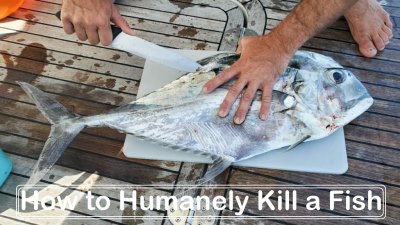Fishing is not just a hobby; for many, it’s a way of life. However, when it comes to taking the life of a fish, it’s essential to do so with respect and humanity. This piece delves into the diverse techniques for compassionately euthanizing a fish, shedding light on the significance of such practices. From understanding the anatomy to exploring respectful methods, we aim to guide readers on the path of responsible and considerate fishing practices.
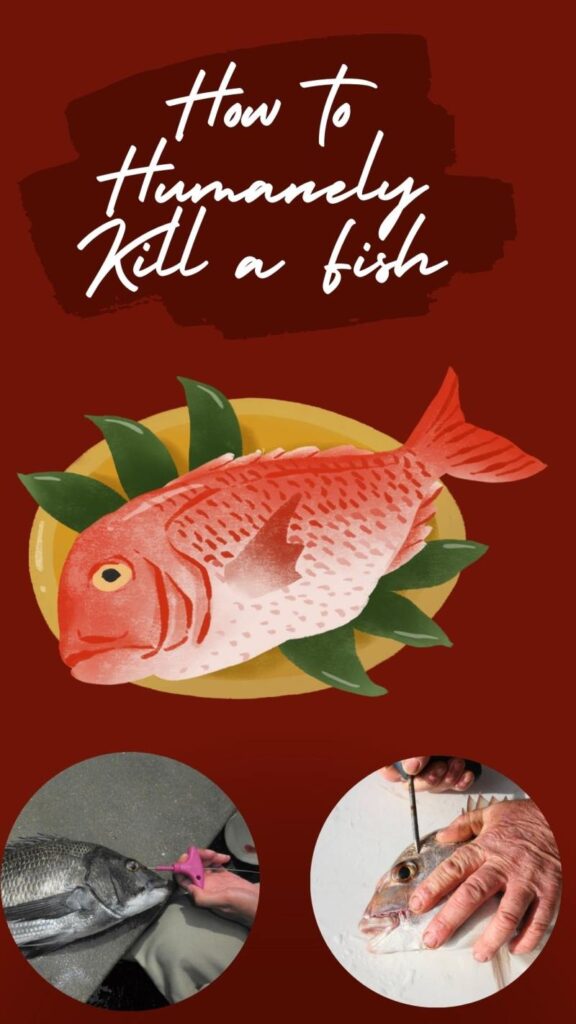
Table of Contents
Understanding the Humane Methods of Killing Fish
Ethical fish handling is an increasingly important topic in fisheries and aquaculture. As the demand for seafood continues to grow, it becomes necessary to explore and implement humane methods of fish harvesting. Below, we will look at some humane methods used in this industry to ensure that the fish killing process is as ethical and compassionate as possible.
Percussive Stunning
Fish harvesting has evolved over time, and one method that has gained attention for its humane approach is percussive stunning. This technique involves delivering a carefully measured blow to the fish’s head, rendering it unconscious instantly. By understanding the anatomy and physiology of fish, practitioners can ensure a swift and painless stunning process.
Spiking the Brain
In the realm of ethical fish euthanasia, spiking the brain has emerged as a method that minimizes stress and discomfort. This process involves inserting a specialized tool into a specific region of the fish’s brain, inducing immediate unconsciousness and preventing unnecessary suffering during the harvesting process. It’s crucial to explore the science behind this method to optimize its effectiveness while prioritizing the welfare of the fish.
Breaking the Neck
Breaking the neck is another humane technique that aims to minimize the distress experienced by fish during the harvesting process. By understanding the anatomy of the fish and applying targeted force, practitioners can swiftly and effectively immobilize the fish, ensuring a more humane and considerate approach to the final stages of its life cycle.
The Alka Seltzer Method
The Alka Seltzer method introduces a unique approach to fish euthanasia, utilizing a substance that reacts with water to produce carbon dioxide gas. This method aims to induce a state of anesthesia in the fish, rendering it unconscious before the actual harvest. Delving into the details of this approach sheds light on the chemical reactions involved and their impact on the humane treatment of fish.
Step-by-Step Guide to Humanely Kill a Fish
Preparation Before Catching a Fish
Before embarking on the process of catching and humanely killing a fish, it is crucial to be well-prepared to ensure a humane and respectful approach to the animal.
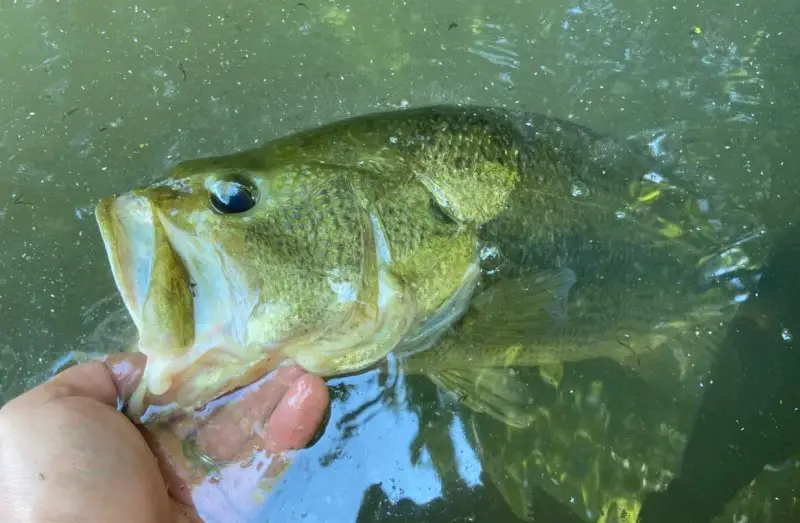
- Choose the Right Equipment. Selecting the appropriate fishing gear is the first step in minimizing stress and harm to the fish. Use barbless hooks to reduce injury, and opt for the correct size and type of fishing rod and reel for the targeted species. Being well-equipped ensures a smoother and more controlled process.
- Educate Yourself on the Species. Different fish species may require specific handling techniques. Researching and understanding the characteristics of the fish you intend to catch will help you tailor your approach to ensure a humane process. Consider factors such as the fish’s size, behavior, and preferred habitat.
- Gather Necessary Tools. Prepare a humane fish handling kit that includes tools like needle-nose pliers, a de-hooking device, and a soft, knotless landing net. These tools will aid in a careful and efficient release if the fish is not suitable for consumption or needs to be returned to the water.
How to Stun the Fish
Once you have successfully caught a fish, the next step is to stun it in a way that minimizes stress and pain. Proper stunning ensures a more humane transition to the final stages of the process.
- Maintain Control. Handle the fish gently and with confidence to maintain control. Avoid dropping or mishandling the fish, as this can lead to injuries. Wet your hands before touching the fish to protect its slime coat, which is essential for its well-being.
- Use a Humane Stunner. Consider using a humane stunner, such as a stunning device or a specialized fish bat, to quickly and effectively render the fish unconscious. This method minimizes the fish’s suffering and ensures a more humane process. Aim for a precise strike to the head to achieve a swift and humane stun.
- Allow Recovery Time. After stunning the fish, give it some time to recover before proceeding to the next step. This ensures that the fish is not fully conscious when you move on to bleeding, further reducing stress and discomfort.
How to Bleed the Fish
Bleeding the fish is a critical step in ensuring the quality of the meat and minimizing any potential suffering. Proper bleeding improves the taste and texture of the fish and is a common practice in humane fish processing.
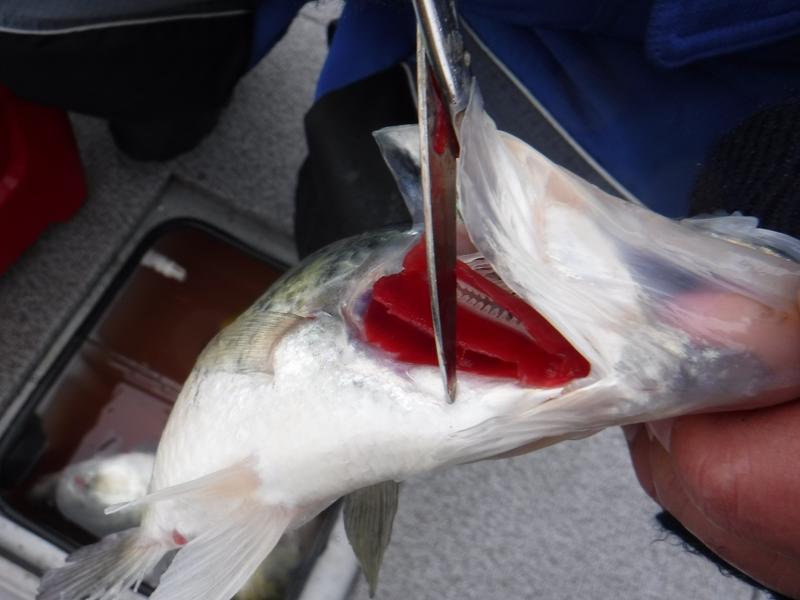
- Locate the Blood Vessels. Identify the major blood vessels near the gills, usually found on both sides of the fish’s throat. Using a sharp knife, make a quick and precise cut through these vessels. This method allows for efficient bleeding without causing unnecessary harm to the fish.
- Utilize a Bleeding Cone. For larger fish, consider using a bleeding cone to secure the fish in an upright position. This facilitates proper bleeding and prevents unnecessary stress. Insert the fish into the cone with the head down to allow the blood to drain effectively.
- Minimize Suffering. Bleeding the fish promptly after stunning minimizes suffering and ensures a humane process. The quick and accurate execution of this step contributes to the overall ethical treatment of the fish and the quality of the final product.
How to Dispose of the Fish
After stunning and bleeding, it is essential to handle the fish responsibly and ensure its proper disposal, whether for consumption or release.
- Ethical Harvesting for Consumption. If you intend to consume the fish, handle it with care during the cleaning process. Use a sharp fillet knife to remove the fillets, minimizing waste and ensuring a high-quality harvest. Dispose of any remaining fish parts responsibly, considering local regulations and environmental impact.
- Responsible Catch and Release. If catching the fish for sport or research purposes, follow best practices for catch and release. Release the fish in a manner that allows for a smooth return to its natural habitat, minimizing stress and injury. Avoid releasing fish into environments where they may struggle to survive.
- Respectful Disposal. In cases where the fish is not suitable for consumption or release, dispose of it respectfully. Consider composting or burying the fish away from water sources to prevent negative environmental effects. Be aware of local regulations regarding fish disposal and adhere to them accordingly.
Humane Practices in Commercial Fishing and Fish Farms
The Need for Humane Fishing Practices
As the demand for seafood continues to rise, it is imperative to prioritize humane practices in both commercial fishing and fish farms. Traditional methods of harvesting seafood often involve practices that can cause stress and harm to fish, impacting their welfare and the overall sustainability of the industry. Recognizing the need for change, there is a growing emphasis on adopting more humane fishing practices.
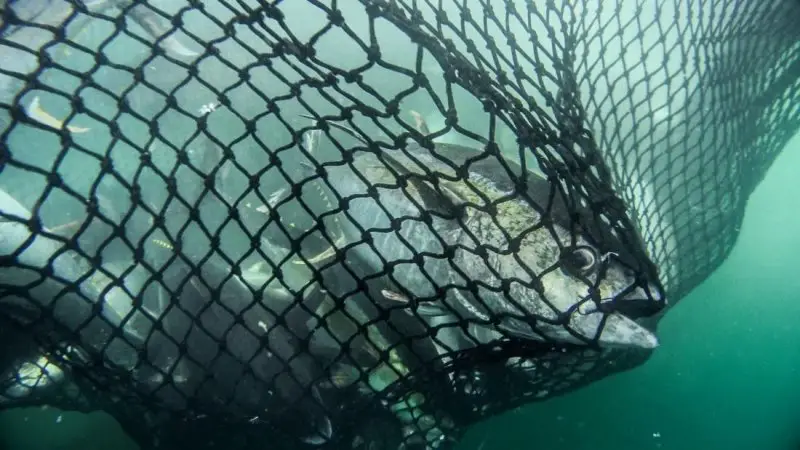
Humane practices not only align with ethical considerations but also contribute to the quality of the final product. Stressed fish produce lower-quality meat, affecting the taste and texture. Additionally, adopting humane practices addresses concerns about the environmental impact of fishing activities, promoting a more sustainable approach to seafood production.
How to Implement Humane Practices in Fishing
Implementing humane practices in commercial fishing and fish farms requires a combination of awareness, technology, and regulatory measures.
Invest in Technology
Utilize advancements in fishing gear and technology to minimize stress and injury to fish. Innovations such as selective fishing gear, which allows for the targeted capture of specific species, can reduce bycatch and unintended harm to non-targeted fish.
Train Fishermen
Provide training and education to fishermen on humane handling techniques. Teaching proper methods for catching, handling, and releasing fish can significantly improve their welfare. This includes the use of equipment designed to reduce injuries, such as barbless hooks and landing nets.
Establish and Enforce Regulations
Governments and fisheries management organizations play a crucial role in promoting humane practices. Implement and enforce regulations that address the treatment of fish in both commercial fishing and aquaculture settings. This includes guidelines on stunning methods, proper bleeding techniques, and the overall handling of fish to minimize stress.
Support Certification Programs
Encourage and support certification programs that focus on humane and sustainable practices. Certifications, such as the Aquaculture Stewardship Council (ASC) or Best Aquaculture Practices (BAP), provide consumers with assurance that the seafood they purchase comes from operations committed to ethical and responsible practices.
Research and Development
Invest in research and development to explore new technologies and methods that further enhance humane practices. Collaborate with scientists and experts to continuously improve the welfare of fish in captivity and during harvesting.
Conclusion
In conclusion, embracing humane fishing practices is not just a responsibility but a way to ensure the sustainability and ethicality of the beloved pastime. By understanding the various methods, avoiding common mistakes, and embracing alternatives, anglers can contribute to a more compassionate fishing community.
FAQ
How can I humanely put down a fish at home?
Euthanizing a fish is a delicate process, and it’s essential to approach it with care and empathy to minimize stress and discomfort for the fish. Here are steps you can take to humanely put down a fish at home:
Decide on the Method:
There are several methods for euthanizing a fish, and the choice may depend on the fish species, size, and your comfort level. Common methods include using clove oil, freezing, or blunt force.
Clove Oil Method:
This method involves using clove oil, which is a natural anesthetic.
Fill a container with water from the fish tank and transfer the fish into it.
Add a few drops of clove oil to the water. The fish will become sedated.
Gradually increase the concentration of clove oil until the fish is fully anesthetized.
Once anesthetized, add more clove oil to ensure humane euthanasia.
Freezing Method:
This method involves placing the fish in a plastic bag and then placing it in the freezer.
Transfer the fish to a plastic bag with some water from the tank.
Remove excess air from the bag and seal it tightly.
Place the bag in the freezer. The cold temperature will induce a state of suspended animation, leading to humane euthanasia.
Blunt Force Method:
This method involves a quick and humane strike to the fish’s head.
Prepare a hard surface, such as a table or cutting board.
Hold the fish firmly and deliver a swift and decisive blow to the head, ensuring a quick and painless death.
Monitor Signs of Euthanasia:
Regardless of the method chosen, monitor the fish closely for signs of complete euthanasia.
Ensure the fish is no longer moving, and its gill movement has ceased.
Dispose of the Body Properly:
Once euthanasia is confirmed, it’s essential to handle the fish’s body with care and respect.
Consider burying the fish in a garden or backyard or check local regulations for proper disposal methods.
Remember, the goal is to minimize stress and pain for the fish. Choose a method that you are comfortable with and that aligns with your ethical considerations. If uncertain, consult with a veterinarian for guidance, especially if you are dealing with a valuable or sensitive species.
What is the most humane way to dispatch a fish?
The most humane way to dispatch a fish is a method that causes the least amount of stress and pain while ensuring a quick and irreversible loss of consciousness. Different methods may be more suitable for various fish species and sizes. Here are a few humane methods commonly used:
Clove Oil Method:
Clove oil is a natural anesthetic and is often used for euthanizing fish.
Place the fish in a container with water from its tank.
Add a few drops of clove oil to the water to sedate the fish.
Gradually increase the concentration of clove oil until the fish is fully anesthetized.
Once anesthetized, add a higher concentration of clove oil for humane euthanasia.
Blunt Force Method:
This method involves delivering a quick and decisive blow to the fish’s head, ensuring immediate loss of consciousness.
Place the fish on a solid surface and use a blunt object to strike the head with precision.
The goal is to cause instant and irreversible damage to the brain, leading to a swift and humane death.
Freezing Method:
The freezing method involves placing the fish in a plastic bag and then placing it in the freezer.
Transfer the fish to a plastic bag with water from its tank.
Remove excess air from the bag and seal it tightly.
Place the bag in the freezer. The cold temperature induces a state of suspended animation, leading to humane euthanasia.
Decapitation:
Decapitation involves removing the fish’s head quickly, leading to immediate loss of consciousness.
Use a sharp, clean tool to perform a swift decapitation.
This method is more suitable for larger fish.
Electrocution:
In some cases, electrocution can be a humane method, particularly for larger fish.
An electric current is applied to the water, stunning and euthanizing the fish quickly.
It’s crucial to note that the choice of method may depend on the fish species, size, and the equipment available. Always prioritize a quick and humane process, and monitor the fish closely for signs of complete euthanasia. If uncertain, seeking advice from a veterinarian or a professional with experience in fish care is recommended. Remember to handle the fish’s body respectfully and dispose of it appropriately.
What tools or equipment are recommended for humane fish euthanasia?
The tools or equipment recommended for humane fish euthanasia depend on the chosen method. Here are some common tools and equipment associated with different euthanasia methods:
Clove Oil Method:
Clove Oil: Used as a natural anesthetic to sedate the fish.
Container: A suitable container to hold water from the fish tank.
Measuring Device: To ensure precise dosing of clove oil.
Blunt Force Method:
Solid Surface: A hard surface like a table or cutting board for the fish to lie on.
Blunt Object: A tool such as a blunt instrument or a specialized device designed for humane euthanasia.
Freezing Method:
Plastic Bag: To contain the fish along with water from its tank.
Freezer: A standard household freezer.
Decapitation:
Sharp Tool: A clean and sharp tool, such as a knife or axe, for a quick decapitation.
Cutting Surface: A stable surface for performing the decapitation.
Electrocution:
Electric Shock Device: A specialized tool designed for electrocution euthanasia.
Container with Water: To immerse the fish and enhance conductivity.
It’s essential to emphasize that the chosen method should align with your comfort level, the fish’s species, and the circumstances. Additionally, always prioritize the safety of both yourself and the fish during the euthanasia process.
Before proceeding, consider seeking guidance from a veterinarian, especially if you are unfamiliar with the chosen method or if the fish is a valuable or sensitive species. Professional advice can ensure that the euthanasia is performed as humanely as possible. Finally, regardless of the method chosen, handle the fish’s body with respect and dispose of it appropriately according to local regulations.
Are there common mistakes to avoid when trying to humanely euthanize a fish?
Yes, there are common mistakes that should be avoided when attempting to humanely euthanize a fish. Ensuring a humane process is crucial to minimize stress and pain for the fish. Here are some common mistakes to avoid:
Insufficient Sedation (Clove Oil Method):
One common mistake is not providing enough time for the fish to become fully sedated before attempting euthanasia. It’s essential to gradually increase the concentration of clove oil to ensure the fish is adequately anesthetized.
Inadequate Equipment (Blunt Force Method):
Using inappropriate or insufficient tools for the blunt force method can lead to inaccurate and ineffective strikes, causing unnecessary stress and pain for the fish.
Improper Freezing (Freezing Method):
Failing to properly prepare the fish for freezing, such as not removing excess air from the bag, can compromise the effectiveness of the freezing method, leading to a slower and potentially more stressful process.
Lack of Precision (Decapitation):
Decapitation requires precision to be effective. A common mistake is using a dull or inappropriate tool, resulting in a less-than-instantaneous process and potentially causing additional distress to the fish.
Inadequate Monitoring:
Failing to closely monitor the fish for signs of complete euthanasia is a mistake. It’s essential to ensure the fish is no longer moving, and gill movement has ceased before considering the process complete.
Delay in Decision-Making:
Procrastinating or delaying the decision to euthanize a fish when it is clearly suffering can result in prolonged distress. It’s important to make the decision promptly and carry out the euthanasia using a humane method.
Ignoring Professional Advice:
Neglecting to seek advice from a veterinarian or experienced professional, especially when dealing with valuable or sensitive fish species, is a common mistake. Professional guidance can ensure that the chosen method is appropriate and performed correctly.
Improper Disposal:
Disposing of the fish’s body improperly can be a mistake. Ensure compliance with local regulations and dispose of the body respectfully, considering environmental and ethical considerations.
It’s crucial to approach fish euthanasia with care, empathy, and a commitment to minimizing the fish’s suffering. If uncertain, seeking guidance from a veterinarian or a professional with expertise in fish care is highly recommended.
What signs should I look for to determine if a fish is suffering and needs humane euthanasia?
Recognizing signs of suffering in a fish is essential for making informed decisions about whether humane euthanasia is necessary. Here are some signs to look for:
Behavioral Changes:
Lethargy: A fish that is unusually inactive or lethargic, spending more time than usual at the bottom of the tank, may be experiencing distress.
Loss of Appetite: A sudden decrease in eating or a complete loss of appetite can indicate underlying health issues.
Physical Abnormalities:
Visible Injuries: Severe injuries, open wounds, or lesions that do not show signs of healing can be indications of distress.
Abnormal Swimming: Erratic swimming patterns, difficulty maintaining balance, or swimming upside down may suggest a health problem.
Respiratory Distress:
Rapid Gill Movement: Increased or labored gill movement can be a sign of respiratory distress and may indicate an issue with water quality or an underlying health problem.
Changes in Coloration:
Fading Colors: A fish that is losing its vibrant colors or exhibiting a dull appearance may be stressed or unwell.
Social Isolation:
Isolation from Tankmates: If a fish is consistently isolating itself from other tankmates, it could be a sign of stress, aggression, or illness.
Abnormal Feces:
Changes in Feces: Unusual colors, shapes, or stringy feces can be indicative of digestive issues or internal problems.
Loss of Balance or Buoyancy:
Floating or Sinking Issues: Difficulty maintaining proper buoyancy or swimming abnormally, such as floating at the surface or sinking to the bottom, may suggest internal problems.
Unresponsiveness:
Lack of Response to Stimuli: A fish that does not react to external stimuli, such as tapping on the tank or the presence of food, may be unwell.
Chronic Health Issues:
Persistent Ailments: If a fish has been dealing with chronic health issues that do not improve with treatment and significantly impact its quality of life, euthanasia may be considered.
It’s important to note that individual fish species may exhibit different behaviors, and some changes might be normal for certain species. Regular observation of your fish’s behavior and appearance is key to detecting deviations from their normal state. If you notice persistent signs of distress, it is advisable to seek advice from a veterinarian or a knowledgeable professional to determine the best course of action, which may include humane euthanasia if the fish’s well-being cannot be improved.
Our best posts:
- Lifetime Kayak Reviews;
- Ideas and Suggestions for Funny Kayak Names;
- Best Ultralight Spinning Reel;
- Best Kayak Cart For Sand;
- Best Fish Finder For Kayak;
- Best Monofilament Fishing Line For Spinning Reels;
- Vibe Shearwater 125 Review;
- Best Kayaks for Dogs;
- Best Inflatable Kayak For Whitewater;
- Kayak Trolling Motors.

